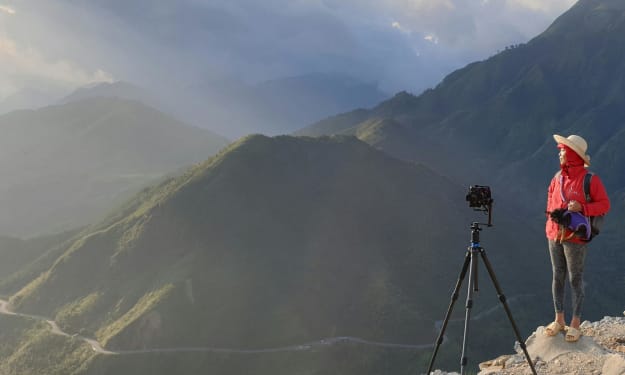Round-formed cities: past and present
Circle Cities: Exploring the Beauty, Benefits, and Sense of Community

- Life in round-formed cities: past and present
Life may not be easy, but for some people, it's like a walk in the garden. There's a village in Denmark that looks like a beautifully curated garden, when seen from above. This unique circular community was built in 1964 on the outskirts of Copenhagen and consists of 24 interconnected circles. Each circle has a dozen homes and there are 284 garden plots. The design is inspired by traditional patterns of Danish villages from centuries ago.
In the centre of the village, there is a well that serves as the main point for mingling, hanging out, and strengthening the community spirit. This pizza-shaped planning might seem like it would cause huge traffic jams when everyone leaves for work in the morning, but it doesn't because the houses are primarily used as weekend getaway spots. This is a big trend in Denmark, as most people living in the city like to have a cabin in the countryside.
Only people who permanently reside nearby can buy a house in Garden City. They can visit their cabins from April to October, or during weekends. The nearby gardens are also available for rent at an affordable monthly rate.
If you're inspired by futuristic designs, you'll love the Smart Forest City in Mexico. It's still in the project stages and is being designed by the same Italian architect who built the Vertical Forest in his hometown of Milan. It will consist of two huge towers with 700 trees, 11,000 plants, and 5,000 shrubs growing right out of the concrete.
The Mexican project will be a botanical garden within a modern city near Cancun. It is inspired by Mayan heritage and honours their special relationship and respect for nature. It's going to house 130,000 residents in homes covered by plants and will also be a research centre.
The Orbit is another project that will transform a rural town in Canada into the city of the future. It will be home to the next generation of community that will enjoy a rural lifestyle, integrated with the cutting-edge technology. The Orbit will be packed with fiber optics, drone ports, self-driving vehicles, and large rooftops with foliage to release plenty of oxygen. The streets will be a mix of circles and squares, going from the central hub, reminding us of the Danish Garden City.
How about an already existing town encrusted with diamonds? In Nordidgen, Germany, the first residents came to settle down in the ninth century, believing they were building a home in a volcanic crater.
But in reality, the stones they used for construction were embedded with millions of tiny diamonds, stones were transformed into tiny diamonds at a concentration like nowhere else in the world, the secret was only uncovered in the 1960s, when two geologists from the USA studied the landscape from a distance and noticed it didn't look exactly like a volcanic crater. The Popeye Village in Malta might not have any residents, but it's far from being quiet, when the visitors arrive, the whole village was once a movie set for the 1980 comic strip- a screen version of the story of Popeye-that sailor, who loved spinach a lot, it was the first lead role for Robin Williams. By the way, to build the movie set, they brought tree trunk logs from the Netherlands and some wooden shingles from Canada and built over 20 realistically looking constructions. There's a Nautical School,a bakery, a post office, the mayor's office and Popeye comic Museum. The movie became a huge hit and the locals decided not to part with it, instead of disassembling it, they turned the set into a theme park. You can have some family fun here, and the colour of the water in the bay is out of this world.
If you feel like saving some money for your new home you might consider investing in real estate in the Spanish Town of Centennial de las Bodegas. You won't need to pay for building some of the walls and the ceilings, three thousand locals live under and directly into the sides of the mountains- the place that has a history of at least two thousand years. The cliffs have protected many generations, living here, from unwanted guests,plus the Rocks keep the houses cool in the summer and warm in the winter, so that's right, you can also save on air conditioning.
The sense of community is strong as ever in our next destination Santa Cruz Del Islote in Colombia-it is one of the world's most crowded islands with around 900 to 1 200 residents living in the territory about the size of two soccer fields, fishermen built this island on a coral platform over a century ago, they chose it because of its beautiful location and the absence of mosquitoes. I can completely relate to that, the families of the original settlers were growing and most of them never left the island. All the residents are natives and they all have one of six different last names. When the family needs extra space they just add an extra floor to one of around 100 homes in town, now it has a school, shops, a church and a restaurant. There is no traffic, since the streets aren't wide enough for cars, or trucks, and the distances are perfectly walkable, and there's no need to lock the doors when you leave. Everyone knows each other, so the crime rate equals zero. Ever wondered what it's like to live inside a beehive? Well,you can experience something close, if you stay on this island.
In conclusion, we have explored some unique and fascinating round-formed cities of the past and present. From the Garden City in Denmark to the Centennial de las Bodegas in Spain, we have seen that circular communities not only offer a sense of community but also provide important environmental benefits. In the Smart Forest City in Mexico, we see that the integration of nature and urban development can result in a beautiful and sustainable city. The Orbit in Canada demonstrates that technology and nature can coexist in a rural setting. The Popeye Village in Malta reminds us of the allure of film and story. Lastly, Santa Cruz Del Islote in Colombia shows us that a small community living in close quarters can be incredibly tight-knit and safe. These round-formed cities remind us of the power of innovation, community, and design.
About the Creator
Nataliya Ozerova
I love topics on history, science and everything beyond human understanding, to learn something new and get surprised every day,I also like healthy lifestyle, politics, law, educational(20 years of being a teacher) and psychological topics.
Enjoyed the story? Support the Creator.
Subscribe for free to receive all their stories in your feed. You could also pledge your support or give them a one-off tip, letting them know you appreciate their work.






Comments
Nataliya Ozerova is not accepting comments at the moment
Want to show your support? Send them a one-off tip.